Maria Kuptsova
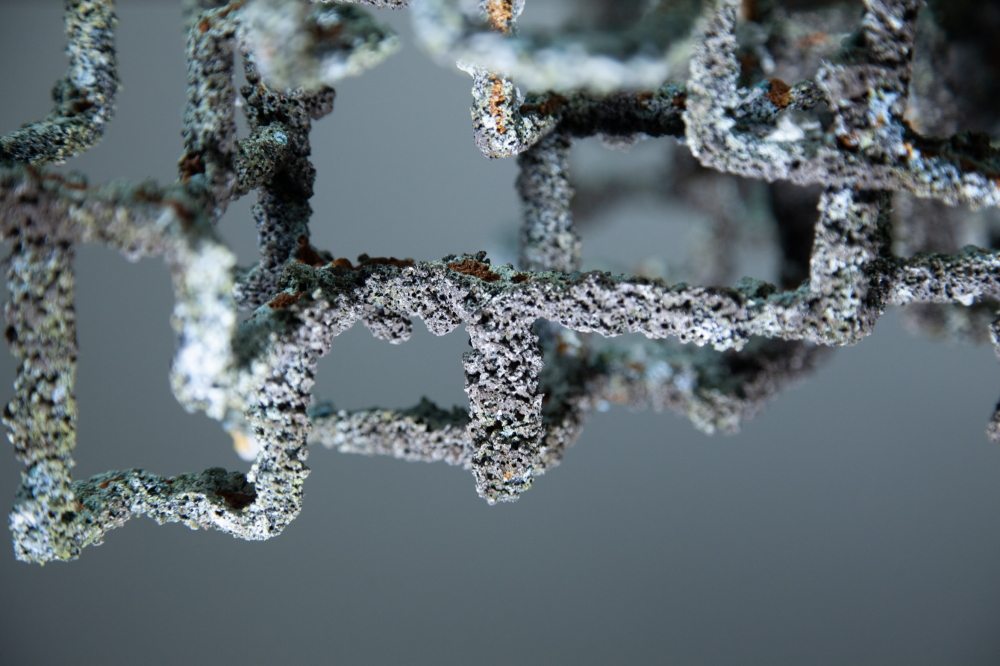
reGENERATION
2022reGENERATION is a research project which investigates the state of our urbansphere by de-coding data on the pollution of local water sources into the form of synthetic sculptures. Introducing both digital and material forms of computation, the project searches for new forms and aesthetics programmed by digital, chemical and biological processes.
Water is a key indicator of ecological conditions. It is an essential compound on the planet and plays a crucial role in all biological, environmental and anthropogenic processes. However, there are many challenges facing our ability to sustainably interact with this resource. The condition of water bodies around the world is continuously aggravated by industrial and mining operations, on-going military operations, agriculture and constant anthropogenic interference in natural ecosystems, which is even more evident these days. reGENERATION project raises the question of the need for regeneration, that is the renewal of the relationship between the human and the environment, focusing specifically on the aquatic ecosystem of our cities.
The synthetic sculptures are based on Wolf H. Hilbertz's BiorockTM technology, developed to restore coral reefs and marine life. This technology allows crystal structures to grow over the metal substrate stimulated by the process of electrolysis - that is, by passing an electric current through a metal substrate placed in a volume of water. We use this technique in the project to allow the matter to program the form of an art piece. The spatial learning system is based on the study of water composition, with samples taken from local water sources. The morphology, resolution, colour and porosity of the art object are directly programmed by the chemical composition of the water and is its hybrid, bio-synthetic interpretation. Each object is thus unique and created in interaction with the environment, and is also an identifier of the ecological conditions of a particular location.
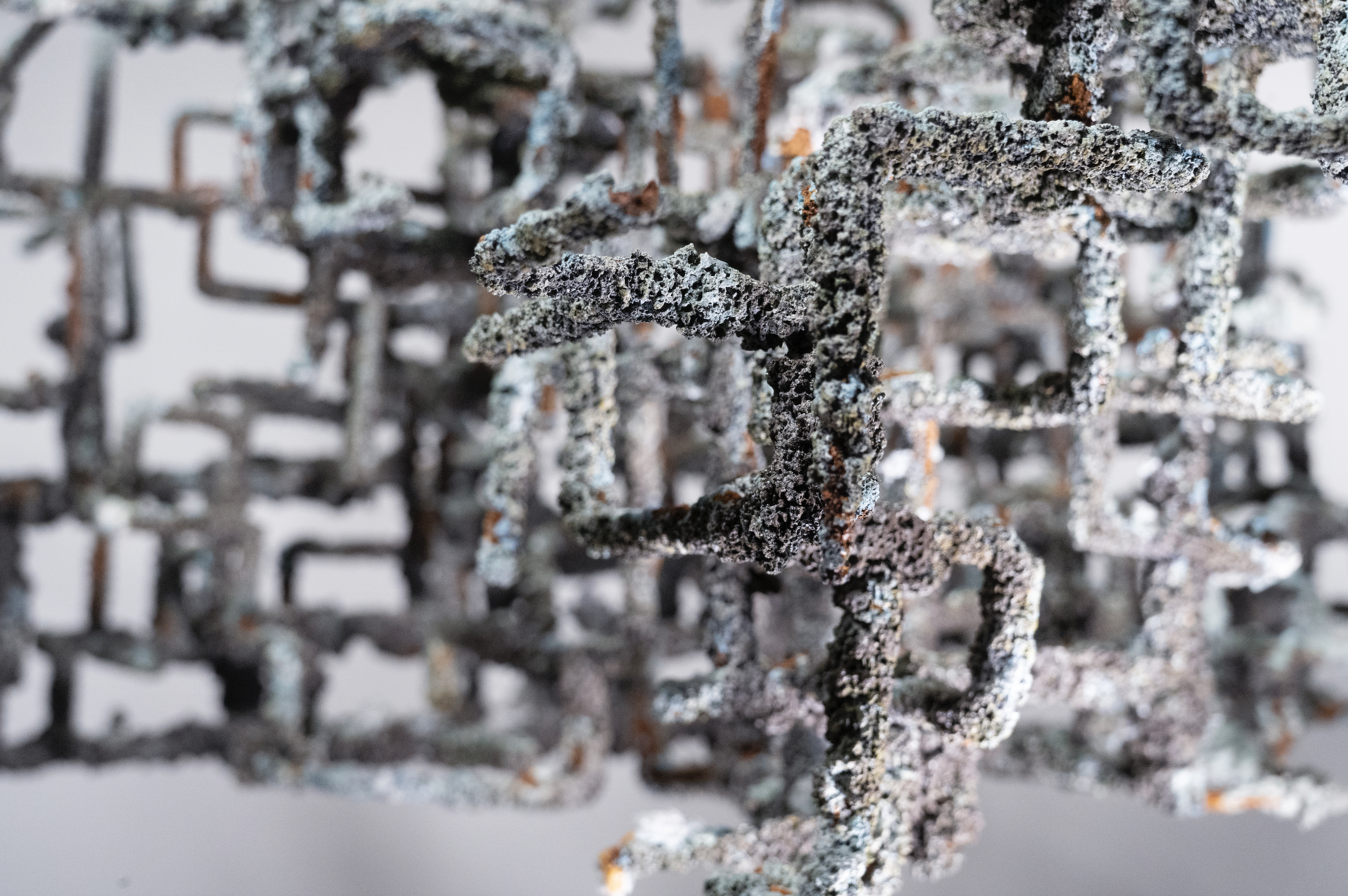
The synthetic sculptures present a different kind of aesthetics, not an ideal beauty, but one created by all the disruptive processes going on in the world. Their aesthetic form embodies ecological agency. In August - September 2022 reGENERATION project has been investigating 3 different sites with its unique conditions of water sources, presenting 3 synthetic sculptures: PETRA, ATIS and ETRA.
The synthetic sculpture PETRA, presented at the Sevkabel port in St-Petersburg, is based on the study of the waters of the Baltic Sea, an aquatic ecosystem that is still recovering from the hostilities that took place in the area during the Second World War and is now being polluted by active industry and agriculture. PETRA's morphology is informed by the dataset of metal debris collected from the bottom of the river Neva and the bay. The sculpture tells the story of St.Petersburg by re-coding a dataset of waste from ship and bridge construction, traces of wars and blockades into a form of synthetic sculpture. The formation of the crystal (the electrolysis process) involves water from the bay, programming the porosity and pigmentation of the biorock crystal through its molecular composition. We discover traces of active contaminants from agricultural industry as well as large quantities of metal microparticles from decomposed industrial waste. These pollutants are now causing the largest algae blooms in the Baltic Sea Bay, preventing its marine life from developing. The structure of PETRA’s crystals is an identifier of such pollutants and impurities in water bodies, telling the story of the postwar ecosystem through water composition.
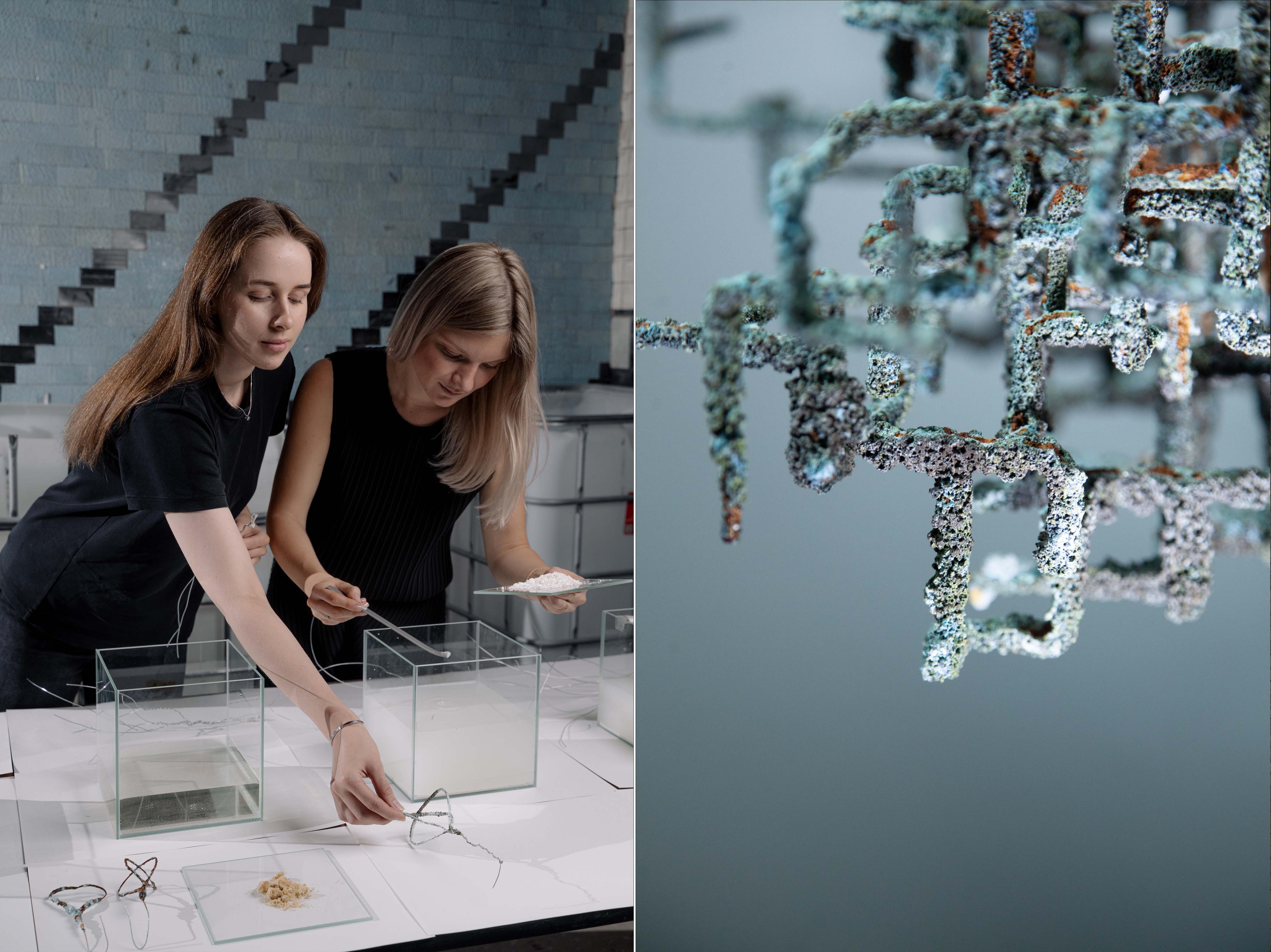

The synthetic sculpture ATIS, on view at the MMOMA in Moscow, argues that there is a need to regenerate the relationship between the human and the environment. ATIS' morphology is programmed through a morphological interpretation of Dmitry Prigov's statement (1). ATIS dialogues with Prigov's “new sincerity”, responding to his quotation, which hovers over the entrance to the MMOMA, through its morphological formation. If Dmitry Prigov's work reads as the antithesis to the absurdity of late Soviet and post-Soviet culture, ATIS addresses the contemporary generation, offering to rethink the established canons and habits of society through a closer connection to the environment and involvement in the processes taking place within it. For the process of electrolysis we use water composition identical to tap water of Moscow central district, thereby studying how water composition influences shape on a micro scale.
The virtual sculpture ETRA aims to represent environmental issues in a digital environment by fusing digital and biological forms of computation into a high-resolution virtual piece. To create the ETRA sculpture, we studied the composition of water in the Iset River in Ekaterinburg, Ural. This area has been heavily depleted by active mining and industrial production. Today, the Ural is in even greater danger as the government's tendency, reinforced during the last year, is to exploit and sell as many natural resources as possible on the cheap. We use the data obtained from analysing the pollution and chemical composition of the Iset River to create a digital sculpture, whose porosity and volume vary according to the parameters studied. The chemicals and metals present in the aquatic ecosystem create the aesthetics of the project, converting physical particles into digital bits of code. The aesthetic form becomes an identifier of pollution present in the water ecosystem.
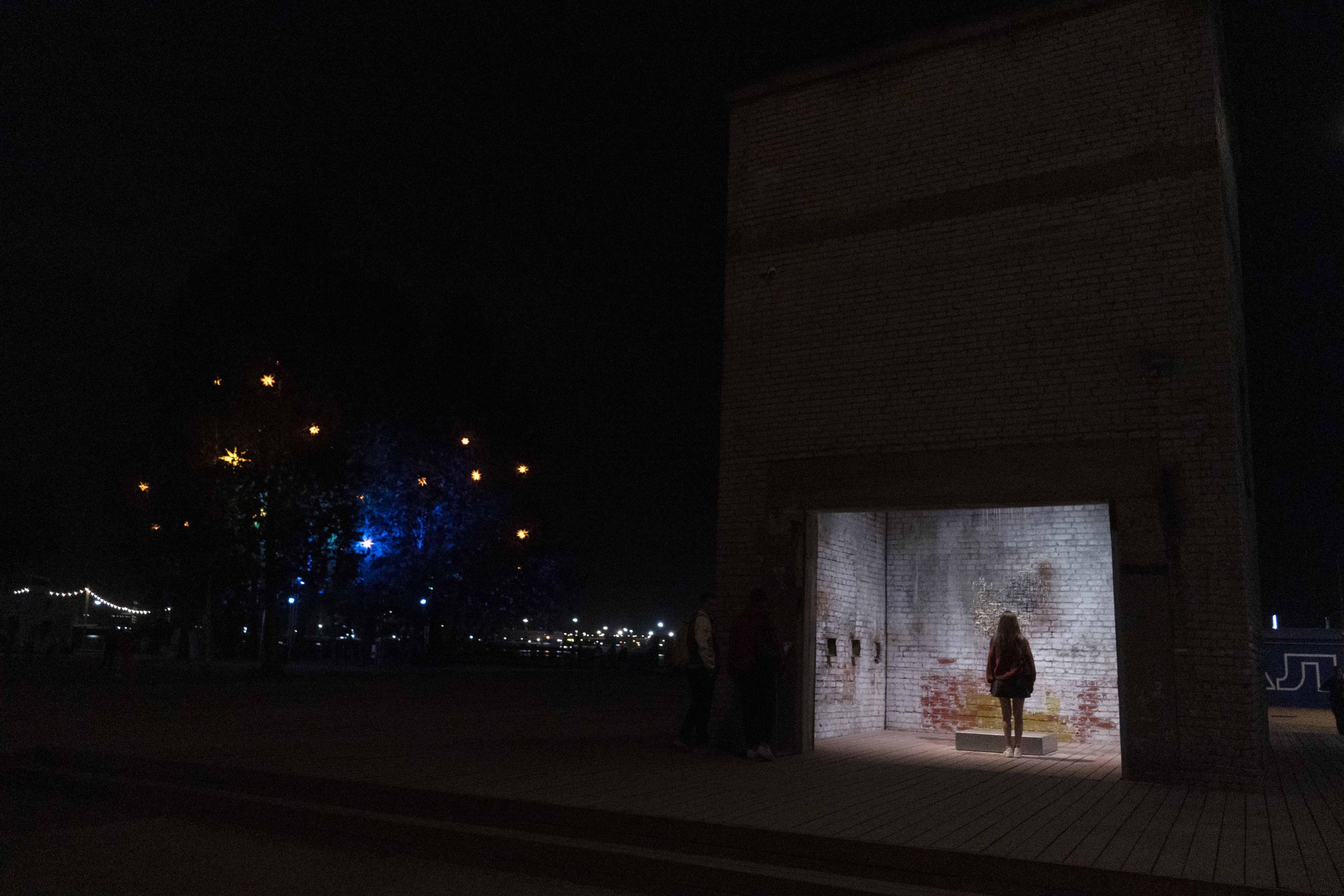
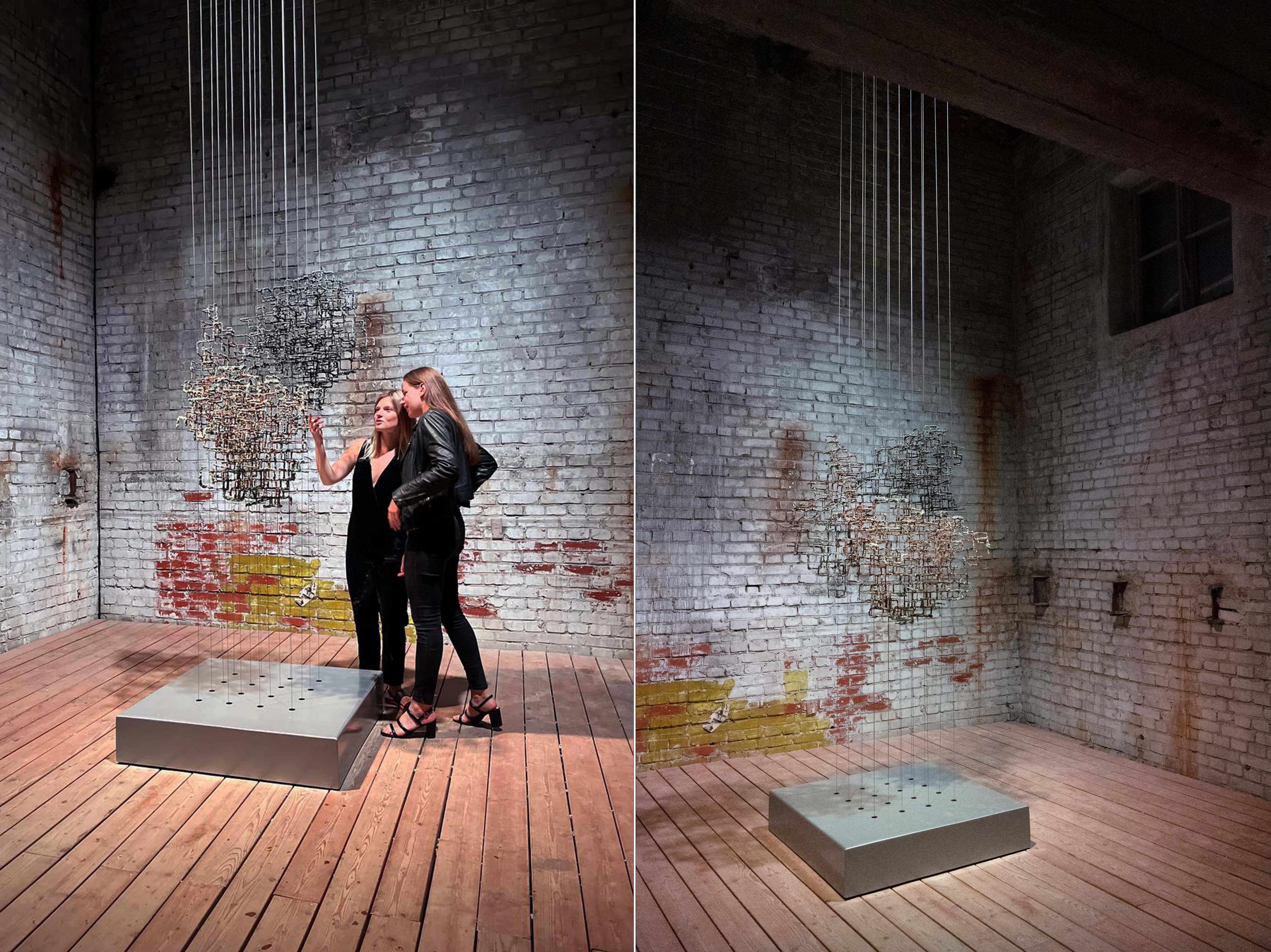
(1) "Citizens! Feel the approaching deadlines, deadlines of day and night, seasons, ages, centuries, epochs, calps and eons!" D.Prigov
Artists: Maria Kuptsova, Marina Muzyka
Project team: Gleb Andreev, Denis Kozovec
Curator: Olga Vad
Camera: Nikita Gusev, Alexandra Mikhailova, Natalia Pyatkina